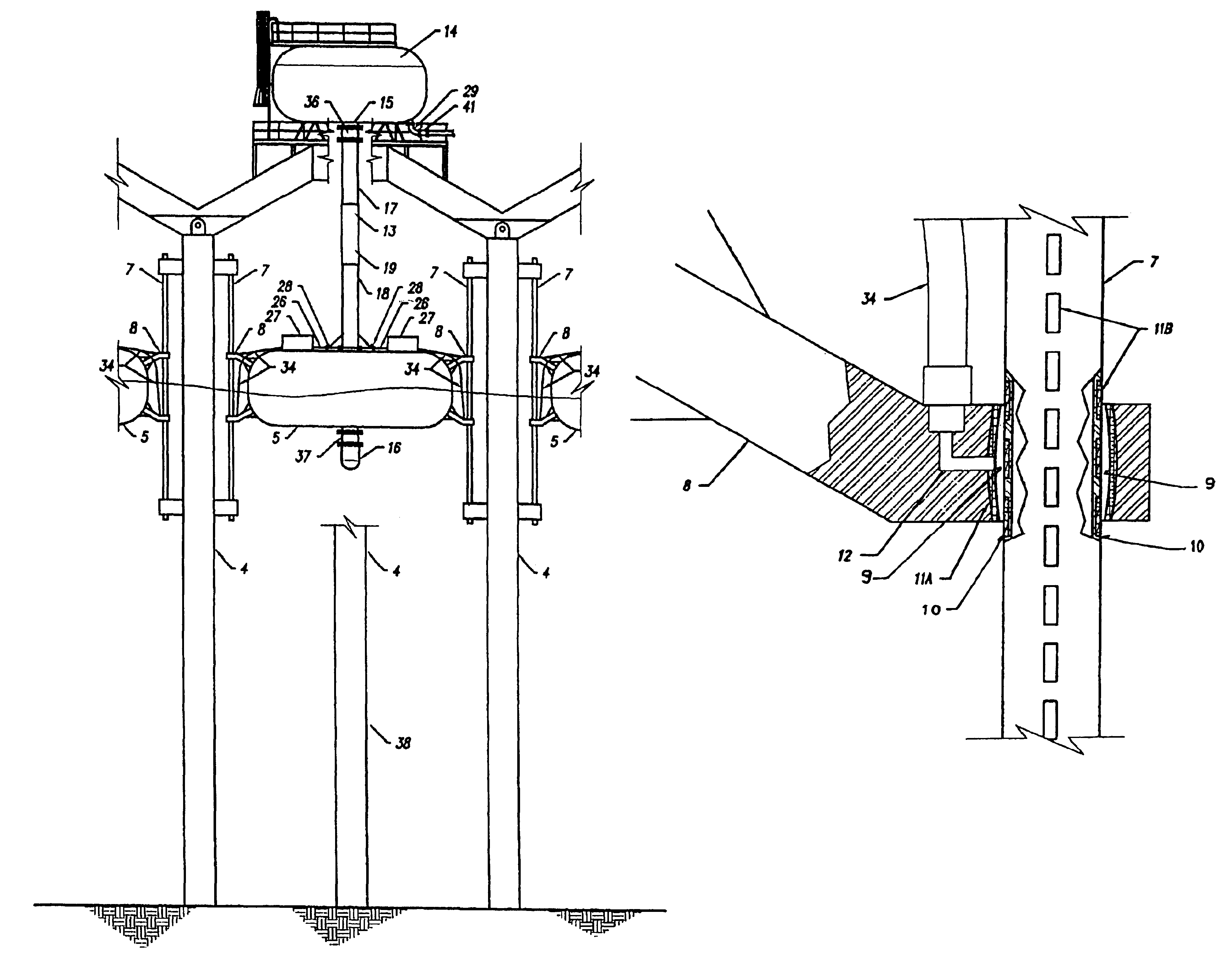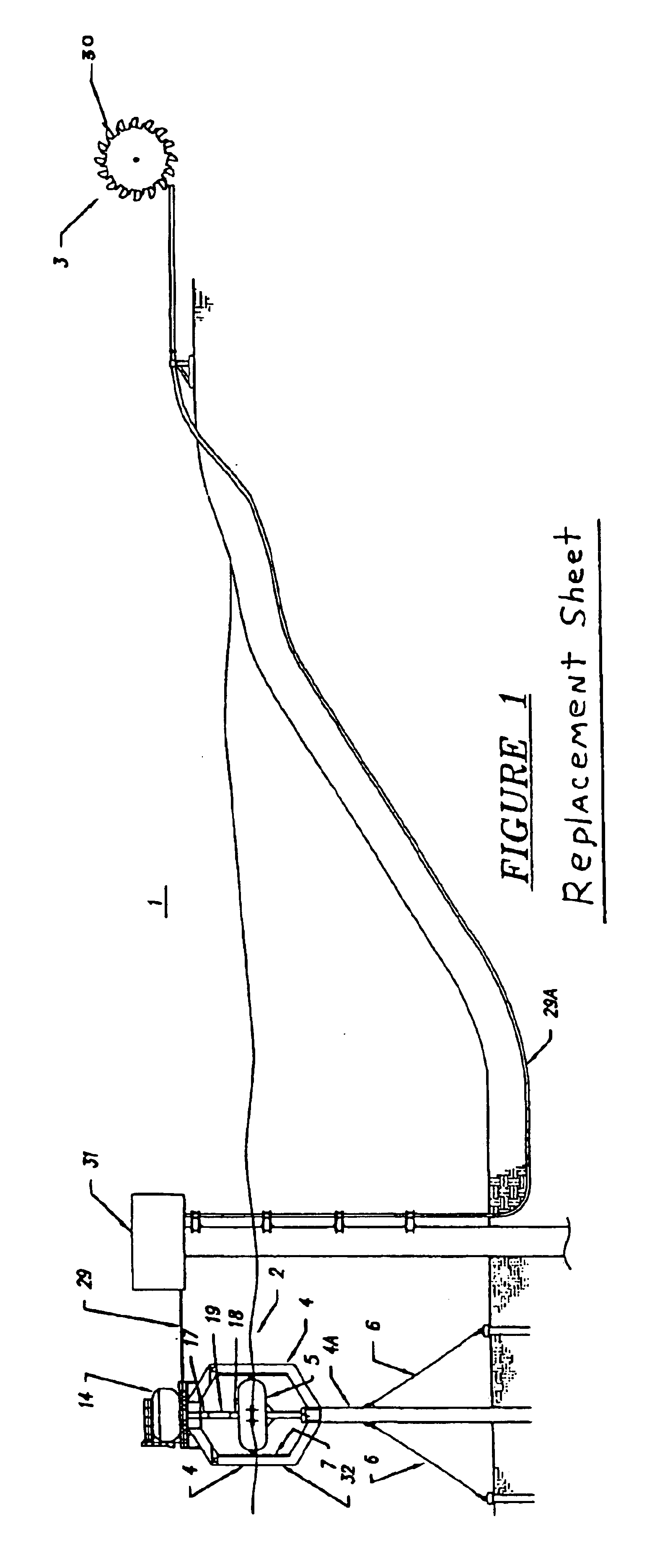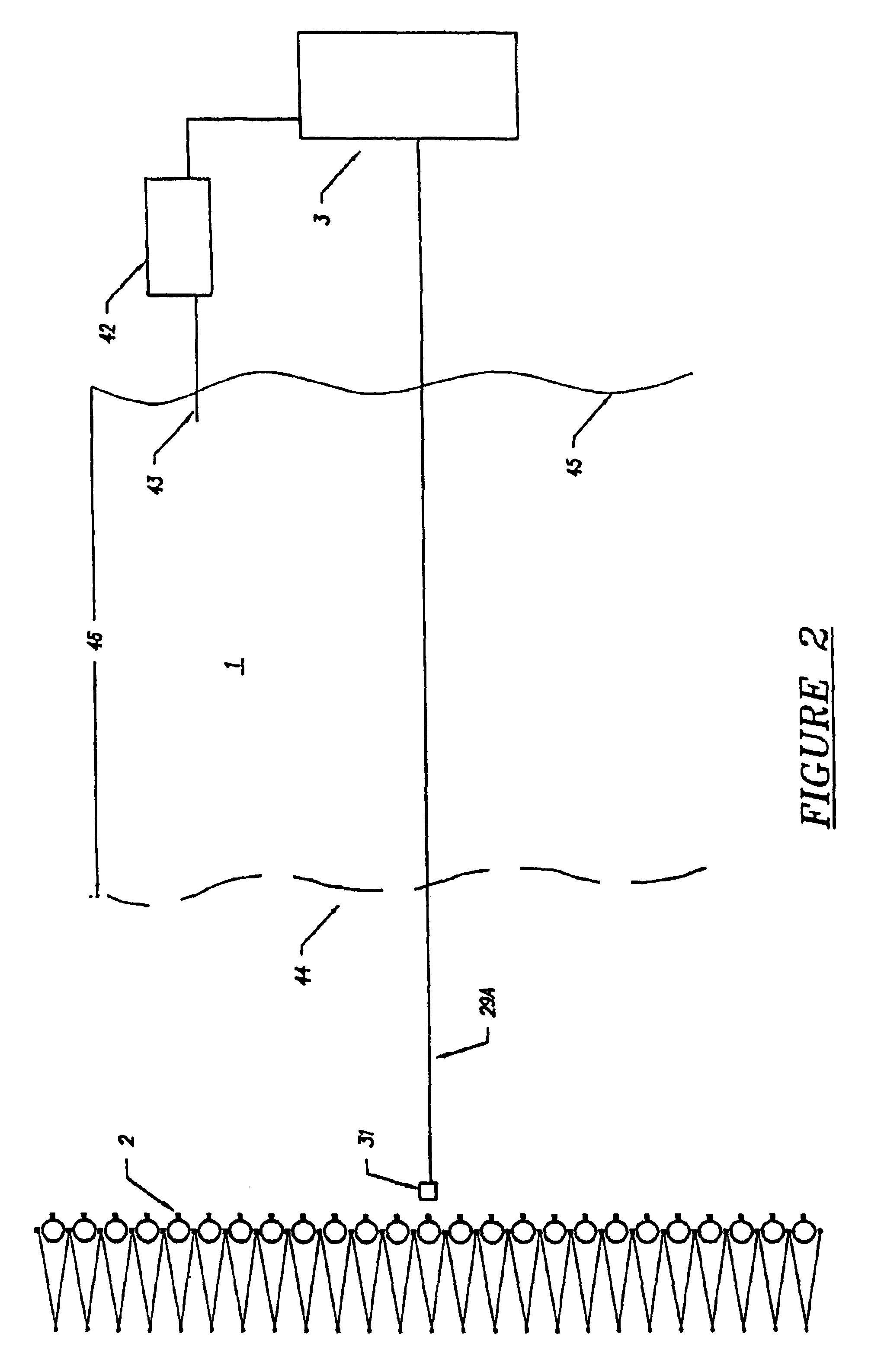Tide compensated swell powered generator
a generator and swell technology, applied in the direction of electric generator control, electric motor propulsion transmission, locomotive transmission, etc., can solve the problems of loss of efficiency, difficulty in coordinating electrical output with demand, and variability in the range of motion of the float riding on the swell, so as to minimize the friction inherent in the rise and fall of each float, reduce the friction, and minimize the effect of friction
- Summary
- Abstract
- Description
- Claims
- Application Information
AI Technical Summary
Benefits of technology
Problems solved by technology
Method used
Image
Examples
Embodiment Construction
[0034]The invention is a swell powered generator system 1. It is designed to convert the energy of swells in the open ocean, defined for purposes of this invention as that body of water outside the breaker line, into electricity. The system 1 is comprised of two principal components, a float system 2 and a generator system 3.
[0035]Float system 2 is comprised of float frame 32, preferably comprising a plurality of float guide legs 4, most preferably three ft. by three ft. box beams. In the preferred embodiment, there are three such legs 4 per float 5. In one embodiment, each leg 4 extends vertically from the ocean floor, thereby comprising a support structure 33. However, in another embodiment, legs 4 merge into a single leg 4A below float 5. In this embodiment, only single leg 4A will extend to the ocean floor. Single leg 4A will be anchored to the ocean floor with a plurality of cables 6, preferably four per leg. Legs 4 and 4A as well as the rest of float system 2 should preferably...
PUM
 Login to View More
Login to View More Abstract
Description
Claims
Application Information
 Login to View More
Login to View More - R&D
- Intellectual Property
- Life Sciences
- Materials
- Tech Scout
- Unparalleled Data Quality
- Higher Quality Content
- 60% Fewer Hallucinations
Browse by: Latest US Patents, China's latest patents, Technical Efficacy Thesaurus, Application Domain, Technology Topic, Popular Technical Reports.
© 2025 PatSnap. All rights reserved.Legal|Privacy policy|Modern Slavery Act Transparency Statement|Sitemap|About US| Contact US: help@patsnap.com



